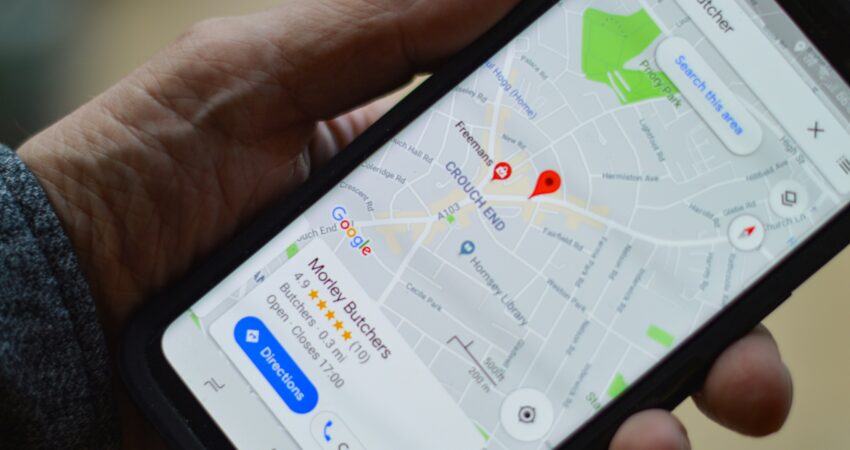
Is your business invisible when customers search for services in your area? You’re not alone. With 97% of consumers using online search to find local businesses, mastering how to improve local SEO ranking 2025 has become more critical than ever before. Local search optimization isn’t just about being found—it’s about connecting with ready-to-buy customers in your immediate vicinity.
The local search landscape continues evolving rapidly, with Google’s algorithm updates favoring businesses that demonstrate genuine local relevance and authority. Whether you run a restaurant, dental practice, or retail store, your local SEO performance directly impacts your bottom line. Understanding how to improve local SEO ranking 2025 strategies can increase your revenue by 20-50% within just six months. In this comprehensive guide, you’ll discover seven proven strategies that successful businesses use to dominate local search results and attract more qualified customers to their doorstep.
Why Local SEO Ranking Matters More Than Ever in 2025
Local search drives serious business results. Recent data reveals that 78% of location-based mobile searches result in offline purchases within 24 hours. Even more compelling, local searches convert at an impressive 50% rate—significantly higher than traditional organic searches.
The stakes are higher than ever in 2025. Google processes over 8.5 billion searches daily, with “near me” searches growing by 200% year-over-year. According to Search Engine Journal, businesses ranking in the top three local search positions capture 75% of all clicks, while those beyond the first page receive less than 2% of search traffic.
Consider this: a single top-ranking position for high-intent local keywords like “emergency plumber near me” or “divorce attorney [city name]” can generate hundreds of qualified leads monthly. Research from BrightLocal shows that local businesses typically see 2-5x return on investment from effective local SEO campaigns. This is precisely why learning how to improve local SEO ranking 2025 has become essential for business survival.
7 Proven Methods to Improve Local SEO Ranking 2025
Step 1: Master Your Google Business Profile Optimization
Your Google Business Profile serves as your digital storefront’s foundation. Start by claiming and verifying your listing if you haven’t already. Complete every available section with accurate, detailed information including business hours, contact details, services, and high-quality photos.
Upload at least 10-15 professional photos showcasing your storefront, team, products, and services. According to Google’s own research, businesses with complete profiles receive 70% more location actions than incomplete ones. Enable messaging features and respond to customer inquiries within hours—Google rewards responsive businesses with improved visibility.
Pro tip: Check out our complete Google Business Profile optimization guide for advanced strategies that most businesses miss.
Step 2: Build Authority Through Strategic Local Citations
Citations—mentions of your business name, address, and phone number across the web—signal trustworthiness to search engines. Focus on major directories like Yelp, Yellow Pages, Facebook, and industry-specific platforms relevant to your business.
Consistency is crucial. Ensure your NAP (Name, Address, Phone) information matches exactly across all platforms. Even small variations like “St.” versus “Street” can confuse search algorithms and dilute your local authority. Aim for 50-100 high-quality citations from reputable sources.
For a comprehensive list of citation opportunities, explore our local citation building toolkit that includes 200+ platforms organized by industry.
Step 3: Generate Reviews That Boost Local SEO Rankings
Online reviews function as digital word-of-mouth marketing while significantly impacting local rankings. Businesses with higher review volumes and ratings consistently outrank competitors with fewer reviews.
Implement a systematic review generation process. Ask satisfied customers for reviews via email follow-ups, SMS, or in-person requests. Respond to all reviews professionally—both positive and negative. According to ReviewTrackers, Google algorithms favor businesses that actively engage with customer feedback, viewing this as a sign of excellent customer service.
Download our review management templates to streamline your review generation and response process.
Step 4: Create Hyper-Local Content That Ranks
Develop content that demonstrates deep local knowledge and community involvement. Write blog posts about local events, neighborhood guides, community partnerships, or area-specific tips related to your industry.
For example, a landscaping company might publish “Best Plants for [City Name] Climate” or “Preparing Your Garden for [Region] Winters.” This content signals local relevance while attracting customers searching for location-specific information. Research from HubSpot shows that businesses publishing local content see 434% more indexed pages and generate 97% more inbound links.
Need content ideas? Our local content calendar template provides 12 months of location-specific topics for any business type.
Step 5: Optimize for Voice Search and Mobile-First Indexing
Voice search queries tend to be longer and more conversational than typed searches. Optimize for natural language patterns like “Where’s the best pizza near me?” rather than just “pizza restaurant.”
Ensure your website loads quickly on mobile devices—Google prioritizes mobile-first indexing. Local searchers expect immediate answers, with 61% abandoning sites that take longer than 5 seconds to load
Step 6: Build Local Backlinks and Partnerships
Quality backlinks from local organizations, newspapers, chambers of commerce, and community websites demonstrate local authority. Sponsor local events, participate in community initiatives, or collaborate with complementary businesses.
Guest posting on local blogs, partnering with area nonprofits, or joining local business associations creates valuable link-building opportunities while strengthening community ties.
Step 7: Track and Analyze Local SEO Performance
Monitor key metrics including local keyword rankings, Google Business Profile insights, website traffic from local searches, and conversion rates. Use tools like Google Analytics, Google Search Console, and local SEO tracking platforms to measure progress.
Set up conversion tracking to understand which local SEO efforts drive actual business results, not just website visits. This data helps you refine strategies and allocate resources to the most effective tactics.
Mistakes to Avoid
Inconsistent NAP Information: The fastest way to confuse search engines and hurt rankings is maintaining different business information across platforms. Regularly audit your listings for accuracy.
Ignoring Negative Reviews: Failing to respond to negative feedback signals poor customer service to both search engines and potential customers. Address concerns promptly and professionally.
Keyword Stuffing in Business Descriptions: Google penalizes unnatural keyword usage. Write compelling, natural descriptions that inform customers while incorporating keywords organically.
Neglecting Local Schema Markup: Missing structured data prevents search engines from fully understanding your business information. Implement proper schema markup to enhance local search visibility.
Benefits and ROI of Strong Local SEO
Effective local SEO delivers measurable business growth. Companies typically experience 20-50% increases in qualified leads within 3-6 months of implementing comprehensive local optimization strategies.
Beyond lead generation, strong local SEO builds brand authority and trust. Businesses ranking prominently in local searches appear more credible and established to potential customers. This perception advantage often allows higher pricing and improved profit margins.
Local SEO also provides competitive insulation. Once established in top positions, maintaining rankings becomes easier than initially achieving them, creating sustainable competitive advantages in your market.
The lifetime value impact is significant. Local customers often become repeat buyers and referral sources, multiplying the initial SEO investment’s value over time.
Conclusion
Mastering how to improve local SEO ranking 2025 requires consistent effort across multiple channels, but the rewards justify the investment. By optimizing your Google Business Profile, building citations, generating reviews, creating local content, and tracking performance, you’ll position your business for sustained local search success.
Remember that local SEO is an ongoing process, not a one-time project. Search algorithms evolve, competitors emerge, and customer behaviors shift. Stay committed to these seven strategies while adapting to new opportunities and challenges.
Ready to dominate local search results and attract more customers? Contact our local SEO experts today for a personalized strategy consultation and take the first step toward transforming your online visibility into profitable business growth.
FAQs
Most businesses see initial improvements within 4-8 weeks, with significant ranking gains typically occurring within 3-6 months of consistent optimization efforts.
Google Business Profile optimization combined with consistent NAP citations across the web forms the foundation of strong local SEO performance.
While there’s no magic number, businesses with 25+ reviews generally outperform those with fewer reviews. Focus on consistent review generation rather than hitting specific targets.
Basic local SEO tasks like claiming listings and requesting reviews can be done independently. However, comprehensive strategies involving technical optimization and competitive analysis often benefit from professional expertise.
Local SEO budgets vary widely based on market competition and business size. Small businesses typically invest $500-2,000 monthly, while larger enterprises may spend $2,000-10,000+ monthly for comprehensive campaigns.
















